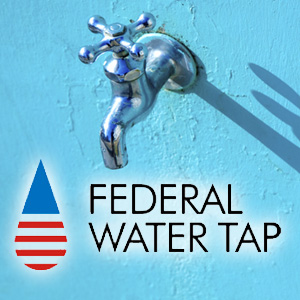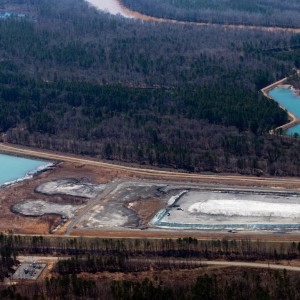Federal Water Tap, February 15: Obama Budget Proposal Highlights Water Technology Innovation
The Rundown
President Obama makes his budget pitch. California senator introduces (another) drought bill. The White House defers to Congress for Flint funding but does look to expand Medicaid for affected families. Spy agency chiefs testify about national security risks. Texas representatives try to exempt a proposed reservoir from Clean Water Act permitting. The research arm for Congress releases reports on water infrastructure. The Army Corps will begin construction on six projects. Lead notification bill passes the House. USAID initiative looks at groundwater use in Armenia.
“Extreme weather, climate change, environmental degradation, related rising demand for food and water, poor policy responses, and inadequate critical infrastructure will probably exacerbate — and potentially spark — political instability, adverse health conditions, and humanitarian crises in 2016. Several of these developments, especially those in the Middle East, suggest that environmental degradation might become a more common source for interstate tensions.” — official statement from James Clapper, director of national intelligence, on the 2016 worldwide threat assessment.
By the Numbers
28 percent: Increase in the Obama budget for WaterSmart, a program that was launched in 2010 to study water supply challenges in the American West and respond to them. (Bureau of Reclamation)
1.8 million: Acres in the Mojave Desert designated as national monuments. (White House)
News Briefs
Budget Numbers
The president’s budget is a statement of priorities. The $US 4.1 trillion proposal must be vetted by the Republican-led Congress, which will most likely reject the president’s proposal.
The last Obama budget gives new prominence to water. The White House has a two-prong water strategy that it is supporting with a $US 267 million budget request. First, increase the efficiency of water use. Second, develop new technologies that will bring down the cost and energy consumption of desalination, reuse, and other sources of new water supply.
Other notable budget items:
- Full funding of the Land and Water Conservation Fund, at $US 900 million
- A total of $US 2 billion for drinking water and sewer loan programs, a cut of 11 percent, or $US 257 million
- $US 1.2 billion for the U.S. Geological Survey, including an 8 percent increase for water research
- $US 106 million for Indian water rights settlements. A priority for the Obama administration, which has signed six settlements, the majority of the funds will go toward building the Navajo-Gallup water supply project, a pipeline in northwestern New Mexico.
- $US 4.6 billion for the U.S. Army Corps of Engineers
- $US 8.3 billion for the U.S. Environmental Protection Agency, a 2 percent increase
Army Corps Releases 2016 Work Plan
The U.S. Army Corps of Engineers will begin construction on six projects in 2016. The projects — two in California, two in Minnesota, and one each in Alaska and Virginia — address flood risk, navigation, and environmental restoration.
Flint Update
The White House wants Flint residents to get the financial assistance they need, but it will defer to Congress on how to do that, according to press secretary Josh Earnest.
Meanwhile, White House officials told Democratic members of Congress that they are working to expand Medicaid access for families in Flint, the Detroit Free Press reports.
And, the Small Business Administration announced that low-interest loans — at 4 percent interest — would be made available to Flint businesses.
Finally, a Centers for Disease Control and Prevention advisory committee held a meeting on February 9 to discuss how to evaluate the long-term consequences of lead exposure in Flint.
Lead Notification Bill Passes House
By a 416 to 2 margin, the House passed a bill to strengthen requirements for the EPA to notify the public about high lead levels. The bill was introduced by Rep. Dan Kildee (D-MI), who is from Flint.
EPA Chief Questioned on Clean Water, Flint, Farming
EPA Administrator Gina McCarthy appeared before the House Agriculture Committee to discuss the effect EPA regulations have on rural America. She faced questions on the Clean Water Rule, its effect on farmers, and on Flint.
California Drought Bill
Try, try again.
Sen. Dianne Feinstein introduced another California drought bill. The 184-page bill authorizes $US 100 million for desalination, $US 600 million for dams, $US 200 million for water recycling, and more than $US 400 million for fish and wildlife, water supply studies, and infrastructure.
Water Resources Development Act
The Senate Committee on Environment and Public Works began work on a new bill to fund the nation’s ports, levees, and river transport. Sen. Jim Inhofe (R-OK), the committee chairman, said that the committee wants to get back to introducing a bill every two years.
Fast-tracking a Texas Reservoir
Representatives from northern Texas introduced a bill to exempt a big proposed reservoir from Clean Water Act permitting, the Dallas Morning News reports. Rep. Sam Johnson (R-TX) says his district needs the Lower Bois d’Arc reservoir by 2020 and the permitting process has been delayed because of an environmental review.
Studies and Reports
Water as a National Security Risk
James Clapper, director of the nation’s spy agencies, testified before the Senate Select Committee on Intelligence on the 2016 national security threat assessment.
Once again, Clapper noted that environmental change can throw nations into crisis and lead to interstate conflict in countries with unstable governments and social strife.
Water Infrastructure Financing
The Congressional Research Service published two reports on financing water projects. One explains how federal dollars from the Clean Water State Revolving Fund are distributed to the states. The current allocation formula — based on population and assessed needs — is 25 years old, and revising it is “one of the most controversial issues” when the Clean Water Act is reauthorized, the report states.
The other report summarizes the debates surrounding the Water Infrastructure Finance and Innovation Act (WIFIA), a low-interest loan program for large water and sewer projects. Congress authorized a pilot program in 2014. Opponents worry that WIFIA would erode support for existing federal programs such as the state revolving funds. Obama’s budget proposal included $US 20 million for the WIFIA loan program.
Climate Risk for Investors
The Securities and Exchange Commission is reviewing its guidelines for disclosing exposure to climate-related investment risks, according to a report from the Government Accountability Office. The SEC issued its guidance in 2010.
On the Radar
San Joaquin River Restoration
The Bureau of Reclamation will increase water releases into the San Joaquin River, Valley Radio reports. The releases from Millerton Lake, which will continue through February 29, are designed to aid salmon.
Groundwater in Armenia
The U.S. Agency for International Development announced a three-year program to reduce groundwater use in the Ararat Valley, Armenia’s farming hub. The initiative will map the wells in the valley as well as develop stricter permitting policies.
Federal Water Tap is a weekly digest spotting trends in U.S. government water policy. To get more water news, follow Circle of Blue on Twitter and sign up for our newsletter.
Brett writes about agriculture, energy, infrastructure, and the politics and economics of water in the United States. He also writes the Federal Water Tap, Circle of Blue’s weekly digest of U.S. government water news. He is the winner of two Society of Environmental Journalists reporting awards, one of the top honors in American environmental journalism: first place for explanatory reporting for a series on septic system pollution in the United States(2016) and third place for beat reporting in a small market (2014). He received the Sierra Club’s Distinguished Service Award in 2018. Brett lives in Seattle, where he hikes the mountains and bakes pies. Contact Brett Walton






Leave a Reply
Want to join the discussion?Feel free to contribute!